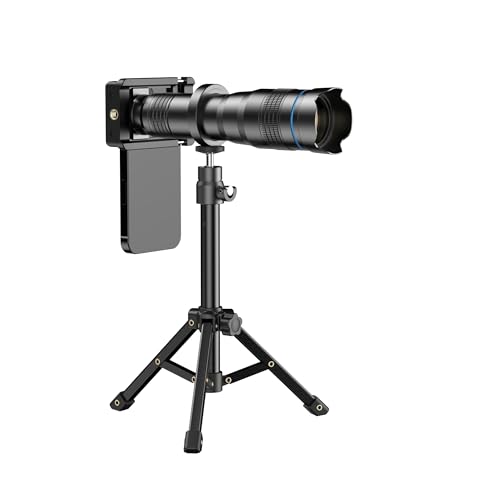




Security cameras have become an essential tool for keeping our homes and businesses safe. They provide a sense of security and peace of mind, allowing us to monitor our property remotely and deter potential intruders. However, one common concern among users is how much data these cameras consume.
Understanding the data usage of security cameras is crucial for choosing the right camera and ensuring that your internet plan can handle the load. Different factors, such as resolution, frame rate, and recording settings, can affect the amount of data a security camera uses. In this article, we will explore the data consumption of good security cameras and provide tips on managing data usage effectively.
Factors affecting data usage in security cameras
Several factors can influence the amount of data used by security cameras:
1. Resolution:
The higher the resolution of the camera, the more data it will use. High-resolution cameras capture more details but also require more storage space.
2. Frame rate:
A higher frame rate means more data is captured per second. Cameras with higher frame rates provide smoother video but consume more data.
Other factors:
Other factors such as compression settings, motion detection sensitivity, and recording duration can also impact the data usage of security cameras.
Resolution and frame rate impact
Resolution and frame rate are two key factors that can significantly impact the amount of data a security camera uses. Higher resolution cameras capture more detail, which leads to larger file sizes and increased data usage. Similarly, a higher frame rate (number of frames per second) can also increase data usage as the camera captures more images in a given time period.
Resolution
Resolution is the number of pixels that a camera sensor can capture, typically expressed as width x height (e.g., 1920 x 1080 for Full HD). Higher resolution cameras, such as 4K or 8K, produce sharper images but also require more data storage and bandwidth to transmit the video feed.
Frame Rate
Frame rate refers to how many frames per second a camera captures. Most security cameras record at 30 frames per second, but some can record at higher rates. A higher frame rate results in smoother video playback but also requires more data to store and transmit the video feed.
| Resolution | Frame Rate | Data Usage |
|---|---|---|
| High | High | Significantly higher |
| High | Low | Higher |
| Low | High | Higher |
| Low | Low | Lower |
Compression technology matters
One key factor that affects the amount of data a security camera uses is the compression technology it employs. Compression technology plays a crucial role in reducing the size of video files without significantly compromising the quality of the footage.
Modern security cameras often utilize advanced compression algorithms such as H.264, H.265, or even newer HEVC (High-Efficiency Video Coding) to efficiently compress video data. These technologies help in minimizing the amount of data generated by the camera while maintaining clear and crisp video quality.
By effectively compressing video data, security cameras can lower the bandwidth requirements and storage needs, resulting in reduced data consumption. This means that choosing a security camera with the right compression technology can significantly impact the amount of data it uses.
Length of recording storage
When considering the amount of data used by a security camera, it’s important to also think about the length of time the recordings are stored. The length of recording storage can vary depending on the camera’s settings and the capacity of the storage device.
Most security cameras offer options for storing recordings locally on a memory card or a network-attached storage (NAS) device. The length of time these recordings are stored can range from a few days to several weeks, depending on the size of the storage and the camera’s recording settings.
Cloud storage solutions are also popular for storing security camera footage. With cloud storage, the length of time recordings are stored can be customized based on the subscription plan chosen. Some plans offer a few days of storage, while others can provide weeks or even months of storage.
It’s important to consider your specific needs and budget when deciding on the length of recording storage for your security camera system. Choose a storage option that allows you to access and review footage when needed without running out of space.
Cloud vs Local Storage Options
When it comes to storing the footage captured by security cameras, you have two main options: cloud storage and local storage. Each option has its own advantages and disadvantages, so it’s important to understand the differences between them.
- Cloud Storage: With cloud storage, the footage from your security camera is uploaded to a remote server over the internet. This allows you to access your footage from anywhere with an internet connection. Cloud storage is convenient and secure, as the footage is stored off-site and is less vulnerable to theft or damage. However, cloud storage typically comes with a monthly subscription fee, and you may have limited storage space depending on the plan you choose.
- Local Storage: Local storage involves saving the footage directly onto a physical device, such as a hard drive or a memory card, that is located on the premises. Local storage gives you full control over your footage and eliminates the need for a monthly subscription. However, local storage is more susceptible to theft or damage, as the physical device can be stolen or destroyed. Additionally, accessing the footage remotely may be more challenging with local storage.
Ultimately, the choice between cloud storage and local storage will depend on your specific needs and preferences. Consider factors such as cost, convenience, security, and accessibility when deciding which storage option is best for your security camera system.
Network Bandwidth Considerations
When choosing a security camera system, it’s important to consider the network bandwidth requirements. Different types of security cameras use varying amounts of data, which can impact your network performance. Here are some key considerations:
Resolution:
The resolution of the camera plays a significant role in determining how much data it will use. Higher resolution cameras produce clearer images but also require more bandwidth to transmit the data. If you have multiple high-resolution cameras, it can put a strain on your network.
Compression:
Many modern security cameras use compression techniques to reduce the amount of data that needs to be transmitted. This can help lower the bandwidth requirements of the cameras. Look for cameras that support efficient compression algorithms like H.264 or H.265.
By considering the resolution of the cameras and the compression techniques used, you can better estimate the network bandwidth required for your security camera system.
Mobile viewing data usage
When accessing your security camera footage on a mobile device, data usage can vary depending on the quality of the video stream and the length of time you spend viewing the footage. Here are some factors to consider:
Quality of video stream
The higher the quality of the video stream, the more data it will consume. If you are viewing high-definition or 4K footage, you can expect higher data usage compared to lower resolution streams.
Length of viewing time
The longer you watch the live feed or recorded footage, the more data you will use. It’s important to be mindful of how much time you spend viewing the footage, especially if you have a limited data plan.
Tip: To minimize data usage, consider adjusting the video quality settings on your security camera app or software to a lower resolution when viewing footage on your mobile device.
Data usage during motion detection
Security cameras typically use more data when they detect motion because they are actively recording and transmitting footage. The amount of data used during motion detection can vary depending on several factors:
Factors affecting data usage during motion detection:
- The sensitivity settings of the camera: Higher sensitivity settings may trigger more frequent recordings, leading to increased data usage.
- The resolution of the camera: Higher resolution cameras will use more data to transmit clearer footage.
- The duration of the motion event: Longer motion events will result in more data being used.
It’s important to consider these factors when setting up your security camera system to manage data usage effectively. Monitoring and adjusting the camera settings can help optimize data usage while ensuring that important events are captured.
Continuous recording impact
Continuous recording on security cameras can have a significant impact on data usage. Since the camera is constantly capturing footage, the amount of data being generated can quickly add up. This is especially true for high-resolution cameras that produce larger file sizes.
Storage considerations
Continuous recording requires ample storage space to accommodate the steady stream of data. Users need to ensure they have enough storage capacity to store the footage for the desired length of time. This may involve investing in additional storage solutions such as external hard drives or cloud storage.
Bandwidth usage
Continuous recording also puts a strain on bandwidth usage, especially if multiple cameras are recording simultaneously. This can lead to slower internet speeds and potential network congestion. Users should consider their internet connection capabilities when setting up continuous recording on security cameras.
Impact of night vision and audio recording
When it comes to security cameras, features like night vision and audio recording can significantly impact the amount of data they use. Night vision technology allows cameras to capture clear images in low-light or dark conditions, but it also requires more data to process and store these images. This can increase the overall data usage of the camera, especially if it is constantly recording in night vision mode.
Similarly, enabling audio recording on a security camera can also increase the amount of data it uses. Audio recordings take up additional storage space and can contribute to higher data usage, especially if the camera is capturing audio alongside video footage. Users should consider the trade-off between enhanced security features like night vision and audio recording and the potential increase in data usage when choosing a security camera.
Overall data usage management tips
Managing data usage is crucial for maintaining a healthy internet connection and avoiding overage charges. Here are some tips to help you control your data consumption:
- Monitor your data usage regularly to stay informed about how much data you are using.
- Set data usage limits on your devices to prevent excessive data consumption.
- Use Wi-Fi whenever possible to reduce cellular data usage.
- Turn off automatic updates for apps and software to avoid unexpected data usage spikes.
- Limit streaming quality on video and music platforms to conserve data.
- Close unused apps and tabs on your devices to prevent background data usage.
- Consider using data-saving modes on your devices to optimize data usage.
- Use data compression tools or apps to reduce the amount of data transferred over the internet.








